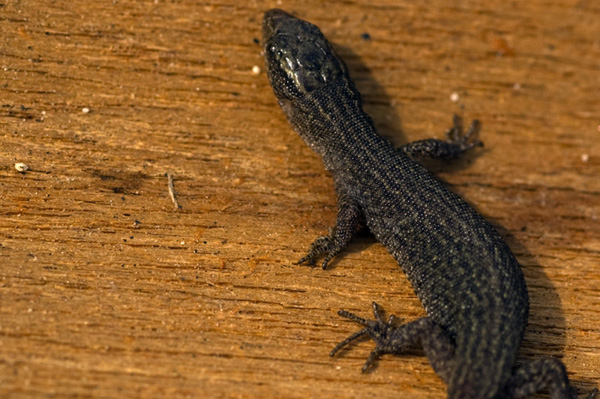Forget about that classic image of a loner lizard, only out for himself as he scurries into the darkness with his cold-blood pumping throughout his solitary scaly body.
The online magazine OnEarth recently reports that “cold-blooded doesn’t mean antisocial at all” in a new article by writer Kim Tingley who recaps what scientists are discovering about Xantusia vigilisin the Mojave Desert.
Dubbed the “forgotten lizard” because they were only perceived by scientists to be good as food for captive lab snakes, these tiny speckled brown reptiles are common sights in the Mojave – and a lot deeper than their neomammalian brains would suggest.
Alison Davis, a postdoctoral fellow who studies the species at the University of California, Berkeley, published a study in the Proceedings of the Royal Society B in October about she and her colleagues who used DNA testing to determine that these lizards not only huddle inside Joshua trees in winter in social groups (warmth in numbers, natch), but they split up based on familial ties.
Why hang out with your genetic relatives? Tingley writes:
Davis’s study suggests that a key reason for the family units among Xantusia vigilis is that the females are viviparious — they give birth to live young. While the mother doesn’t exactly “parent” her offspring, says Davis, she is thrust into contact with them, whereas a lizard that lays eggs may never encounter her hatchlings. Desert night lizards are also slow to mature. They can live up to a decade, and in the two to four years it takes them to reach adulthood, the juveniles stick close to the logs in which they were born.
Davis compares her five-year study to watching an extended reptilian soap opera, which we think would make excellent television viewing on prime time now that ABC’s “V” is done for the year.
— Brenda Rees, editor

